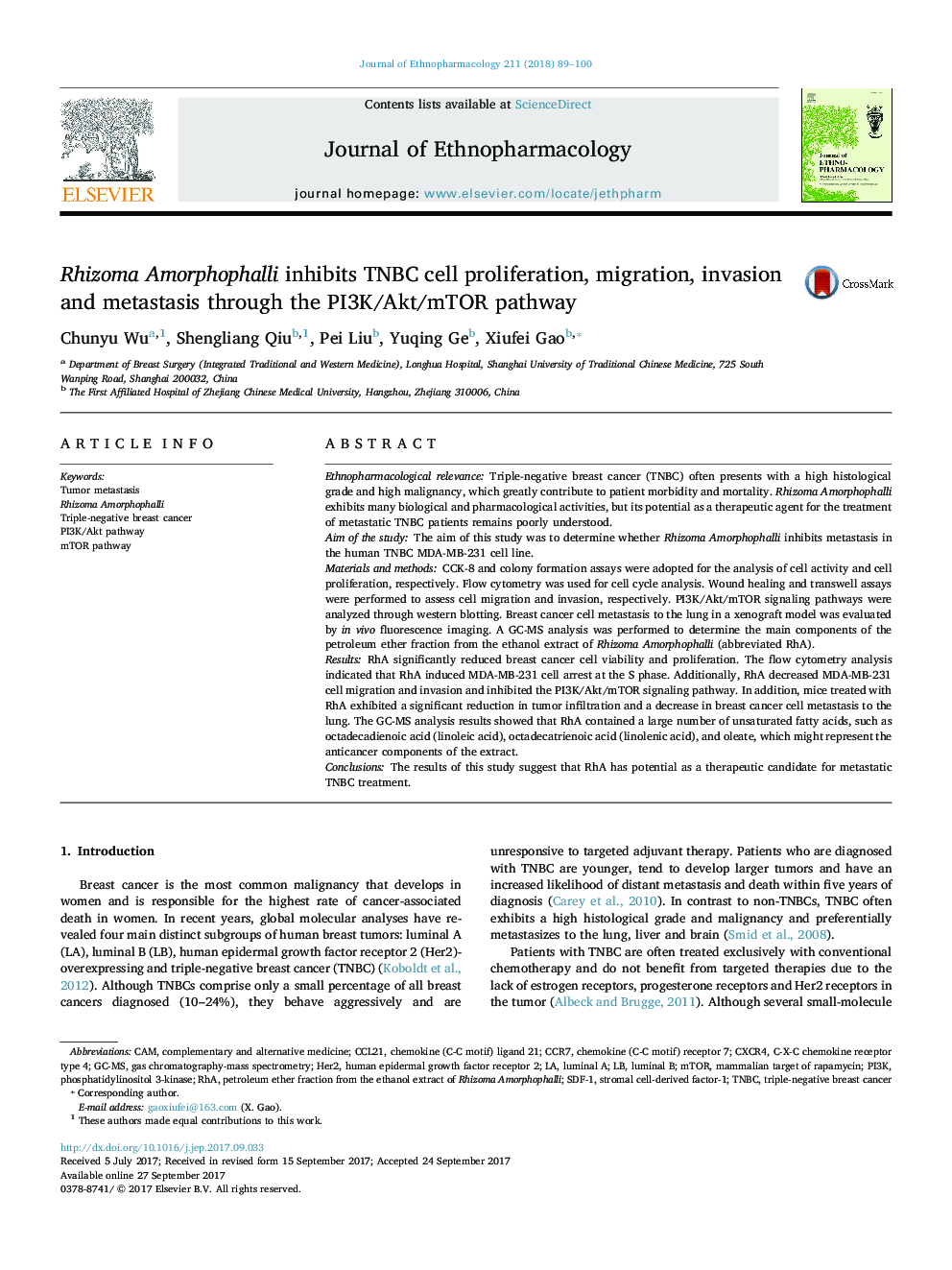| کد مقاله | کد نشریه | سال انتشار | مقاله انگلیسی | نسخه تمام متن |
|---|---|---|---|---|
| 5555892 | 1560351 | 2018 | 12 صفحه PDF | دانلود رایگان |

Ethnopharmacological relevanceTriple-negative breast cancer (TNBC) often presents with a high histological grade and high malignancy, which greatly contribute to patient morbidity and mortality. Rhizoma Amorphophalli exhibits many biological and pharmacological activities, but its potential as a therapeutic agent for the treatment of metastatic TNBC patients remains poorly understood.Aim of the studyThe aim of this study was to determine whether Rhizoma Amorphophalli inhibits metastasis in the human TNBC MDA-MB-231 cell line.Materials and methodsCCK-8 and colony formation assays were adopted for the analysis of cell activity and cell proliferation, respectively. Flow cytometry was used for cell cycle analysis. Wound healing and transwell assays were performed to assess cell migration and invasion, respectively. PI3K/Akt/mTOR signaling pathways were analyzed through western blotting. Breast cancer cell metastasis to the lung in a xenograft model was evaluated by in vivo fluorescence imaging. A GC-MS analysis was performed to determine the main components of the petroleum ether fraction from the ethanol extract of Rhizoma Amorphophalli (abbreviated RhA).ResultsRhA significantly reduced breast cancer cell viability and proliferation. The flow cytometry analysis indicated that RhA induced MDA-MB-231 cell arrest at the S phase. Additionally, RhA decreased MDA-MB-231 cell migration and invasion and inhibited the PI3K/Akt/mTOR signaling pathway. In addition, mice treated with RhA exhibited a significant reduction in tumor infiltration and a decrease in breast cancer cell metastasis to the lung. The GC-MS analysis results showed that RhA contained a large number of unsaturated fatty acids, such as octadecadienoic acid (linoleic acid), octadecatrienoic acid (linolenic acid), and oleate, which might represent the anticancer components of the extract.ConclusionsThe results of this study suggest that RhA has potential as a therapeutic candidate for metastatic TNBC treatment.
139
Journal: Journal of Ethnopharmacology - Volume 211, 30 January 2018, Pages 89-100